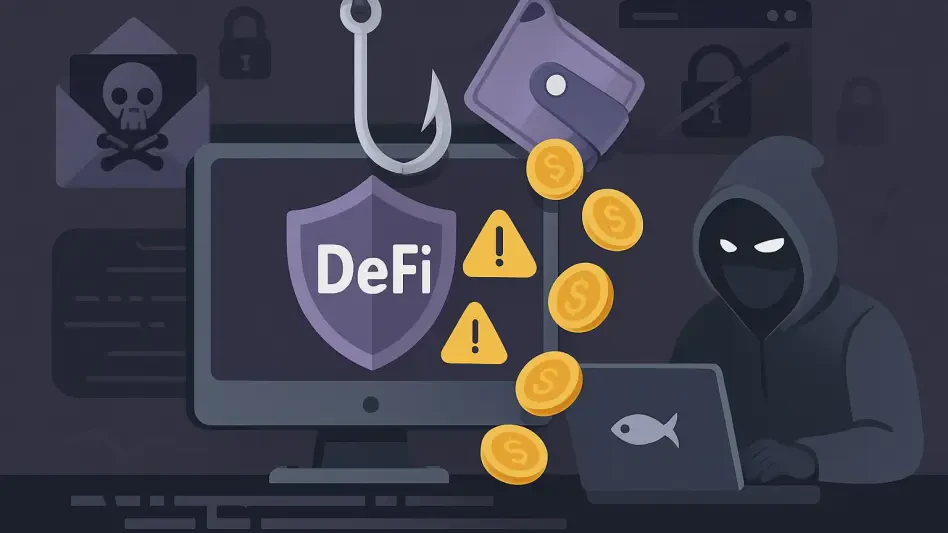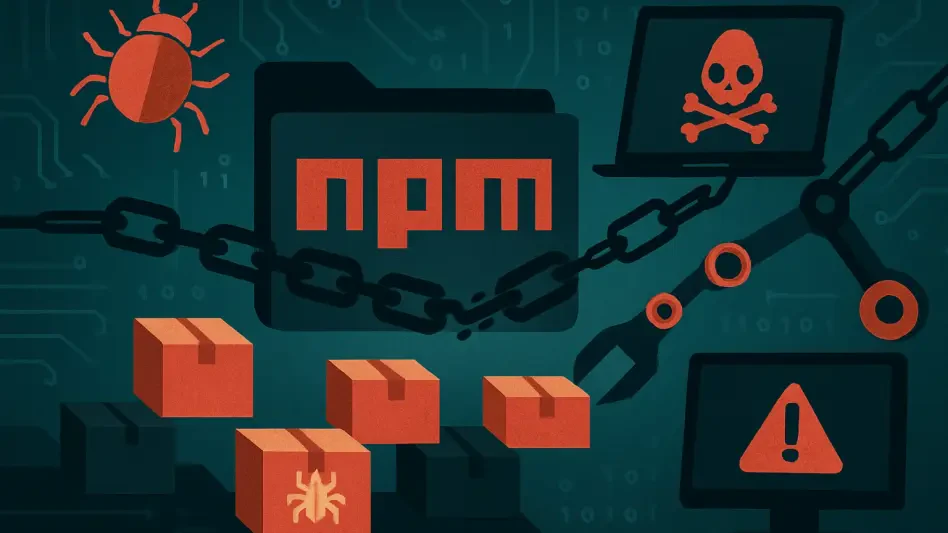In the rapidly evolving landscape of cybersecurity, social engineering has emerged as the most prevalent and insidious threat. Roger Grimes, a data-driven defense evangelist at KnowBe4 Inc., underscores the criticality of this issue, highlighting that social engineering is the primary method by which devices, networks, and environments are compromised. This article delves into the persistent threat posed by social engineering, the role of AI in escalating its sophistication, and how comprehensive security awareness training can mitigate these risks.
The Pervasiveness of Social Engineering
The Foremost Cyber Risk
Social engineering is not just one of many cybersecurity risks; it is the foremost cyber risk. Grimes supports this assertion with numerical evidence, attributing 70-90% of successful data breaches to social engineering. This underscores its significance over other technical vulnerabilities. The core of social engineering attacks lies in exploiting human behavior, with attackers deploying tactics like email phishing to leverage the trust and unwitting compliance of users.
In essence, social engineering attacks are predicated on manipulating individuals rather than relying on technological weaknesses. Grimes points out that the simplicity and effectiveness of these tactics have endured over time. Despite advancements in technology, human vulnerabilities remain exploitable, making social engineering a persistent and escalating threat. Attackers often impersonate trusted figures or organizations to lure victims into divulging sensitive information, such as login credentials or financial details. This manipulation exploits the inherent human tendency to trust and the limited ability to distinguish genuine interactions from fraudulent ones.
Versatility Across Platforms
Grimes points out the long-standing success of social engineering tactics. These attacks are hardware and software agnostic, making them versatile and universally applicable across different operating systems. For instance, tricking users into divulging their login credentials works irrespective of whether they use Windows, Mac, Linux, or Chrome OS. This universality makes social engineering a persistent and pervasive threat.
The adaptability of social engineering also means that it can infiltrate diverse sectors and industries. From healthcare to finance, no sector is immune from such attacks. Furthermore, the low cost and high success rate of social engineering methods make them particularly attractive to cybercriminals. They do not require sophisticated technology or significant resources, allowing even amateur hackers to execute effective campaigns. This broad applicability and minimal resource requirement underscore the urgent need for robust defenses and vigilant practices among users and organizations alike.
The Evolving Threat with AI
AI-Enabled Sophistication
The article highlights a trend where AI-enabled tools amplify the threat of social engineering. These advanced tools allow attackers to craft more convincing and tailored messages. The sophistication of these phishing attempts can obviate the usual red flags like language errors or odd phrasing, which were previously instrumental in identifying malicious emails. Attackers can now easily mimic industry jargon and produce highly convincing content that effectively deceives even vigilant users.
Artificial intelligence has significantly enhanced the customization and automation of social engineering tactics. By analyzing vast amounts of data, AI can mimic individuals and craft messages that appear highly personalized and contextually relevant. This level of sophistication significantly increases the chances of success for these attacks. Moreover, AI can continuously learn and adapt from successful attacks, further refining its approach and making future operations even more potent. Consequently, the traditional methods of detecting phishing and other social engineering attempts are becoming less effective, necessitating more advanced and adaptive defensive measures.
Necessity for Advanced Defensive Measures
This evolution in the threat landscape necessitates increasingly sophisticated defensive measures. Traditional indicators of phishing attempts are becoming less reliable, and organizations must adapt by implementing advanced security protocols and training programs. The integration of AI in social engineering attacks underscores the need for continuous evolution in defensive strategies to stay ahead of cybercriminals.
In view of these advancements, defensive strategies must integrate AI-powered tools to counterbalance the evolving threat landscape. AI can aid in identifying patterns, detecting anomalies, and predicting potential threats before they materialize. Moreover, advanced security protocols should encompass multi-layered defenses, combining technological solutions with human vigilance. Continuous training programs must evolve in tandem with these technologies, ensuring that employees are well-equipped to recognize sophisticated phishing attempts and other social engineering tactics. By fostering an adaptive and resilient security posture, organizations can better defend against the ever-escalating threats posed by AI-enabled social engineering.
Underfunding of Social Engineering Mitigation
Misalignment of Security Budgets
Grimes underscores a critical consensus viewpoint that despite the overwhelming evidence of social engineering’s role in breaches, IT security budgets inadequately address this issue. Remarkably, less than 5% of these budgets are earmarked to tackle social engineering. There appears to be a misalignment between perceived and actual priorities within organizational security strategies, with decision-makers often placing undue emphasis on unpatched software vulnerabilities.
This budgetary misalignment suggests a disconnect between the recognized threat landscape and the allocation of resources. While technical vulnerabilities do pose significant risks, the data clearly shows that social engineering represents a more prevalent threat vector. Yet, organizations continue to allocate disproportionate resources toward patching software flaws, often at the expense of implementing comprehensive social engineering defenses. This oversight leaves a critical gap in their security posture, one that attackers are all too willing to exploit. It becomes imperative for decision-makers to realign their security strategies and budgets to effectively address the actual risks they face.
The Need for Recalibration
This misalignment calls for a recalibration of security budgets to reflect the actual threats. Organizations must recognize the disproportionate impact of social engineering and allocate resources accordingly. By prioritizing social engineering mitigation, companies can better protect themselves against the most prevalent form of cyber threat.
Recalibrating security budgets involves not only increasing the allocation for training and awareness programs but also investing in advanced detection and response technologies specifically targeting social engineering tactics. Organizations need to understand that the cost of falling victim to a social engineering attack far exceeds the investment required for robust defense mechanisms. This strategic realignment will ensure that resources are effectively utilized to reduce the risk and impact of social engineering attacks, thereby enhancing overall organizational security. Incorporating regular assessments and adjustments to the budget allocation will help maintain an adaptive and responsive security strategy in the face of evolving threats.
The Essential Role of Training and Awareness
Comprehensive Security Awareness Training
A recurring theme in the narrative is the impact of effective training and awareness programs in diminishing social engineering risks. Comprehensive security awareness training emerges as a cornerstone in reshaping cyber defense strategies. Successful training helps employees recognize, report, and respond to social engineering attempts. Pedagogical approaches that include regularly scheduled phishing tests and immediate feedback are shown to be highly effective components.
These training programs should not be static but rather adaptive and continuously updated to reflect the latest tactics and techniques used by cybercriminals. By incorporating real-world scenarios and interactive modules, training can become more engaging and impactful for employees. The goal is to build a culture of cybersecurity awareness where employees are the first line of defense. Empowering them with the necessary knowledge and tools to identify and combat social engineering attempts can significantly reduce the likelihood of successful breaches. Moreover, fostering an environment of open communication where employees feel comfortable reporting suspicious activities is crucial for early detection and prevention.
Continuous Education and Engagement
Grimes suggests that an opportune training program should engage employees with some form of training at least once a month. This continuous education keeps security at the forefront of employees’ behavioral practices. Tools that facilitate easy reporting of suspicious activities further fortify the defense against these attacks. Continuous engagement ensures that employees remain vigilant and responsive to potential threats.
Consistent engagement helps in creating a security mindset among employees, wherein cybersecurity best practices are ingrained in their daily operations. Periodic training sessions, supplemented with awareness campaigns and reminders, ensure that employees do not become complacent. Additionally, organizations should encourage employees to stay informed about new social engineering techniques and emerging threats. This ongoing education and reinforcement help in maintaining a heightened state of alertness and readiness to respond to potential attacks, thereby minimizing the risk of successful social engineering breaches.
Impact of Strong Training Programs
Tangible Benefits of Training
Organizations that invest robustly in training programs exhibit markedly better defense statistics. The article cites KnowBe4’s customers as an example: less than 3% have been compromised, compared to a global average closer to 40%. This statistic underscores the tangible benefits of investing in human-centric defensive measures. It also highlights the efficiency and efficacy of KnowBe4’s offerings, setting a benchmark for industry standards.
The significant reduction in breach occurrences among well-trained organizations demonstrates the effectiveness of continuous education and awareness programs. These organizations not only experience fewer successful attacks but also recover more swiftly in the event of a breach. The proactive approach to cybersecurity training helps in creating a resilient workforce capable of identifying and mitigating threats early on. Furthermore, these organizations can serve as models for others, showcasing the advantages of prioritizing training and awareness in their security strategies and encouraging industry-wide adoption of similar practices.
Economic and Practical Benefits
In today’s fast-changing world of cybersecurity, social engineering has become the most widespread and dangerous threat. Roger Grimes, a data-driven defense expert at KnowBe4 Inc., emphasizes how critical this issue is, noting that social engineering is the main technique used to breach devices, networks, and entire environments. This article explores the ongoing threat posed by social engineering, the influence of artificial intelligence in making these tactics more sophisticated, and the essential role comprehensive security awareness training plays in reducing these risks. Grimes points out that attackers often exploit human psychology to trick individuals into revealing sensitive information or granting access to restricted areas. With AI, these attacks can be automated and personalized, increasing their effectiveness. Therefore, organizations must invest in educating their employees and continuously updating their security protocols to counter these evolving threats. By staying informed and vigilant, companies can better protect themselves against the ever-present dangers of social engineering.







